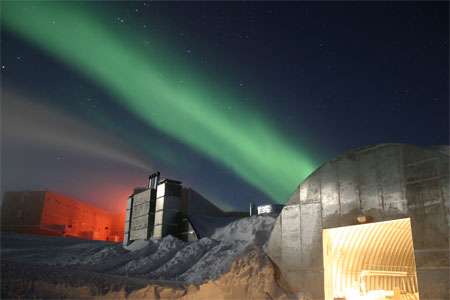The Earth's atmosphere near the South Pole is remote from human influences and therefore serves as a baseline for monitoring worldwide atmospheric conditions and pollution levels. Scientists have measured levels of pollutants, ozone, and atmospheric CO2 at the South Pole station for more than 50 years, providing an important global reference and a continuous record of change.
The clear, stable air and dark skies found at the South Pole provide ideal conditions for astronomical observations and for studying upper atmospheric phenomena such as the Aurora Australis ('Southern Lights').
 Amundsen-Scott South Pole Station and aurora during the long Antarctic night.
Amundsen-Scott South Pole Station and aurora during the long Antarctic night.© Cliff Dickey, 2005, NSF, USAP Photo Library

